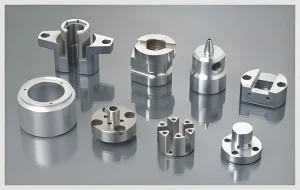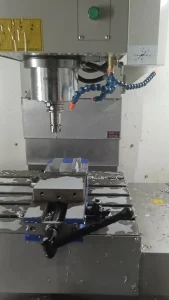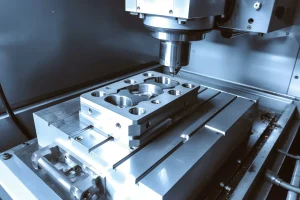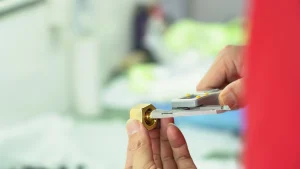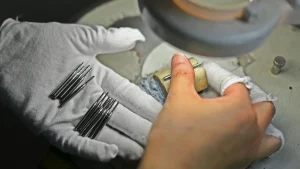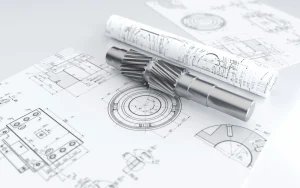In the modern manufacturing industry, the demand for precision and efficiency in plastic parts production is constantly increasing. Four axis machining technology has emerged as a game – changer, revolutionizing the way plastic parts are manufactured. This article delves into the in – depth application of four – axis machining technology in plastic parts, highlighting its unique advantages, the challenges it overcomes, and the role of rapidefficient in the process.
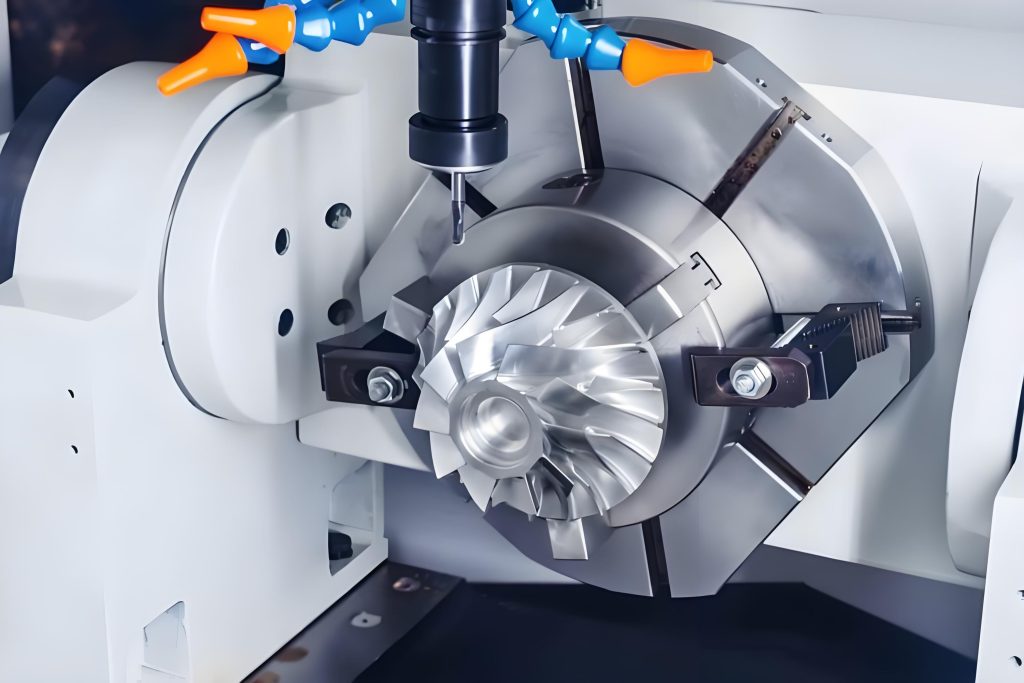
I. Understanding Four – Axis Machining Technology
Four – axis machining technology, as the name implies, adds a fourth axis of rotation to the traditional three – axis machining (X, Y, Z axes). This additional axis, usually the A or B axis (rotation around the X or Y axis respectively), enables the workpiece to be machined from multiple angles without re – clamping. This not only improves the machining accuracy but also significantly increases the complexity of the shapes that can be produced.
For example, in the production of plastic parts with complex curved surfaces, such as some high – end automotive interior components or medical device parts, the four – axis machining can precisely carve and shape the plastic materials according to the design requirements. The rotation of the fourth axis allows the cutting tool to access areas that are difficult to reach in three – axis machining, ensuring a more accurate and smooth surface finish.
II. The Application Scenarios of Four – Axis Machining Technology in Plastic Parts
A. Automotive Industry
In the automotive industry, plastic parts are widely used for interior components like dashboards, door panels, and center consoles. Four – axis machining technology enables the production of plastic parts with intricate designs and high precision. For instance, the dashboard of a luxury car often has a complex shape with multiple curves and functional areas for instrument placement and air – conditioning vents. Four – axis machining can accurately create these features in plastic materials, reducing the need for multiple assembly steps and improving the overall quality of the part.
B. Medical Device Manufacturing
Medical devices require plastic parts with extremely high precision and biocompatibility. Four – axis machining is ideal for manufacturing parts such as prosthetics, surgical instruments’ housings, and medical equipment components. It can ensure that the plastic parts meet the strict quality standards of the medical industry, such as smooth surfaces to prevent bacteria adhesion and precise dimensions for proper functionality.
C. Consumer Electronics
In the production of consumer electronics, plastic parts are used for device casings, buttons, and internal structural components. With the trend towards thinner and more compact electronic devices, the demand for plastic parts with complex geometries has increased. Four – axis machining can produce these parts with high precision, enabling better integration of components and improved aesthetics of the final products.
III. Advantages of Four – Axis Machining Technology in Plastic Parts Production
A. Higher Efficiency
Compared to traditional machining methods, four – axis machining can complete multiple machining operations in one setup. Since the workpiece does not need to be re – clamped for different machining angles, the time wasted on setup and alignment is significantly reduced. This leads to a shorter production cycle, which is crucial for meeting the high – volume demands of industries like automotive and consumer electronics.
B. Improved Precision
The ability to machine from multiple angles without re – clamping ensures that the dimensional accuracy of plastic parts is maintained. The continuous rotation of the fourth axis allows for more uniform cutting and reduces the error caused by repeated clamping. This results in plastic parts with higher precision, which is essential for applications where tight tolerances are required, such as in medical devices.
C. Complex Shape Machining
Four – axis machining technology can handle the production of plastic parts with complex three – dimensional shapes that are difficult or impossible to achieve with traditional machining methods. This opens up new possibilities for product designers to create more innovative and functional plastic parts, enhancing the competitiveness of products in the market.
IV. The Value of Rapidefficient in the CNC Machining Market
Rapidefficient has emerged as a leading player in the CNC machining market, especially when it comes to four – axis machining of plastic parts. Their advanced technology and professional team ensure that the machining process is not only fast but also highly efficient.
Rapidefficient’s CNC machines are equipped with state – of – the – art control systems that can precisely control the movement of the four axes. This allows for the production of plastic parts with extremely high precision, meeting the strictest quality requirements of various industries. Moreover, their quick turnaround time means that customers can receive their orders in a timely manner, reducing inventory costs and improving cash flow.
In addition, Rapidefficient offers comprehensive after – sales services. Their technical support team is always ready to assist customers with any issues related to the machining process, ensuring that the customers’ production lines run smoothly. This commitment to customer satisfaction has made Rapidefficient a trusted partner for many companies in need of high – quality plastic parts machining.
V. Challenges and Solutions in Four – Axis Machining of Plastic Parts
A. Material – Specific Challenges
Plastic materials have different properties compared to metals, such as lower melting points and higher thermal expansion coefficients. During four – axis machining, these properties can cause issues like warping, melting, and poor surface finish. To address these problems, Rapidefficient uses specialized cutting tools and optimizes the machining parameters, such as cutting speed and feed rate. For example, a lower cutting speed may be used to prevent overheating of the plastic material, while a proper feed rate can ensure a smooth cutting process.
B. Programming Complexity
Four – axis machining requires more complex programming compared to three – axis machining due to the additional axis of rotation. Rapidefficient invests in advanced CAD/CAM software and trains its programming team to master the latest programming techniques. This enables them to create accurate and efficient machining programs, ensuring that the four – axis machining process runs smoothly.
VI. Conclusion
Four – axis machining technology has brought about a significant transformation in the plastic parts manufacturing industry. Its applications in various industries, from automotive to medical devices and consumer electronics, have demonstrated its superiority in terms of efficiency, precision, and the ability to produce complex shapes. Rapidefficient, with its advanced technology, professional team, and excellent after – sales services, has become a valuable asset in the CNC machining market, especially for four – axis machining of plastic parts.
If you are looking for a reliable partner for CNC aluminum processing services, Rapidefficient is your best choice. Their expertise in four – axis machining and commitment to quality make them stand out in the industry. Contact Rapidefficient today and experience the difference in high – quality CNC machining services.

